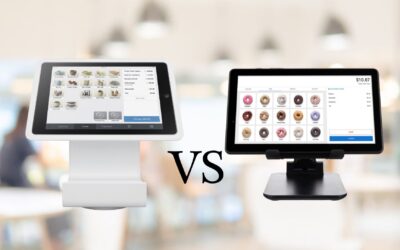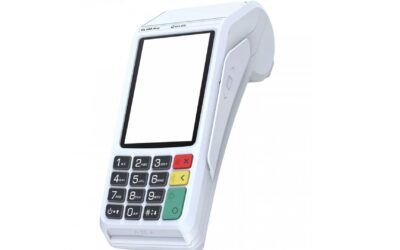
The Advantages of Dual Pricing Programs for Retailers and Small Businesses
Written by: Zac Rogers
Maximize retail profits by adopting dual pricing programs for retailers and small businesses. Explore transparent pricing strategies that reduce fees and drive cash sales with PayWavez today.
If you want to take advantage of a highly competitive retail environment, managing costs while keeping customers happy is a constant balancing act for small businesses and retailers. One major expense many businesses face is the cost of credit card processing fees, which can significantly erode profit margins. A powerful strategy to address these costs is dual pricing — a payment pricing model that offers customers two prices based on their payment method: typically a higher price for card payments and a lower discounted price for cash payments.
Dual pricing programs, supported by companies like PayWavez through integrated payment solutions, are gaining momentum as effective, transparent ways to both save money and retain customer loyalty. This comprehensive guide will explore how dual pricing works, the financial advantages it offers, compliance considerations, and practical tips for implementation tailored for retailers and small enterprises.
What is Dual Pricing?
Dual pricing sets two different prices for the same product or service:
- A higher price for customers paying via credit or debit cards, which factors in the merchant’s payment processing fees.
- A lower price for customers who pay with cash or other non-card payment methods.
This pricing strategy essentially shifts the burden of the card processing fees away from the business—where it typically cuts into profits—and onto the customer choosing to pay by card. The cash-paying customer enjoys a discount, creating an incentive to avoid credit card fees.
Why Credit Card Processing Fees Matter
Credit card processing fees usually average between 1.5% and 3.5% (sometimes higher) of the transaction value, plus fixed per-transaction fees. For small business owners, these fees can add up quickly when processing large volumes of payments or high-ticket items. Over time, the fees significantly drain revenue that could otherwise cover operational costs, payroll, or reinvestment.
Eliminating or reducing these fees through dual pricing can make a meaningful impact on a business’s bottom line.
Key Advantages of Dual Pricing Programs
1. Increased Profit Margins by Offsetting Card Fees
By charging card users a price that fully accounts for payment processing fees, businesses avoid absorbing these charges themselves. This keeps more of the sale revenue within the company, often translating to thousands of dollars saved monthly for retailers with frequent card transactions.
For example, if a business pays a 3% credit card processing fee on $10,000 in sales monthly, it is losing $300 on fees alone. A dual pricing program effectively recuperates this amount by charging card payers slightly more while rewarding cash payers with a lower price.
2. Encourages Cash Payments and Improves Cash Flow
Lower cash prices incentivize customers to use cash, enhancing immediate liquidity for the business. Receiving cash payments instantly improves working capital management by eliminating delayed settlements typical of card transactions.
Furthermore, with more cash sales, retail operations can reduce reconciliation complexities — cash is straightforward to track and manage compared to electronic payments.
3. Transparent and Fair Pricing for Customers
Dual pricing brings transparency to the cost structure of payment methods for both merchants and customers. Customers can clearly see they pay less when avoiding card-related fees, making the pricing structure straightforward and easier to understand.
This transparency fosters a perception of fairness and can enhance customer trust when the business explains that card fees are a third-party charge that the retailer does not profit from.
4. Flexibility and Competitive Edge
Retailers can customize their dual pricing percentages depending on average transaction size, typical card fee amounts, and customer preferences. This adaptability allows businesses to remain competitive without raising general prices for all customers, unlike straightforward across-the-board price hikes.
Offering dual pricing can also differentiate a business from competitors, appealing to cost-conscious shoppers who prioritize saving money by paying with cash.
5. Simplified Transaction Management and Reduced Overhead
With fewer card transactions, businesses may see decreased administrative overhead related to card payment processing: less time spent on transaction reconciliation, chargebacks, and disputes. Staff training can focus on efficient cash handling and dual pricing communication, smoothing the checkout process.
How Does PayWavez Support Dual Pricing?
PayWavez enhances the dual pricing experience by providing advanced payment solutions and POS integration suitable for small to enterprise retailers. Their platform ensures:
- Seamless configuration of dual pricing rules on POS terminals.
- Compliance with legal requirements for dual pricing disclosures.
- Clear, detailed receipt generation showing accurate pricing based on payment type.
- Integrated support for popular payment methods, including cash, credit/debit cards, digital wallets like ApplePay and GooglePay.
- Transparency tools for businesses and customers to understand transaction costs.
Integrating PayWavez’s gateway and terminal solutions provides peace of mind in managing dual pricing efficiently without complicating day-to-day operations.
Compliance and Legal Considerations
Implementing a dual pricing program must adhere to local regulations to avoid lawsuits or fines. Key compliance steps include:
- Clear signage at entry points and payment stations explaining the dual pricing model.
- Transparent communication from staff regarding pricing differences.
- Ensuring the default listed price reflects the card payment price, with the cash price shown as a discount.
- Receipts that clearly display the cash discount or credit card surcharge.
- Avoiding labeling the difference as a “surcharge” if regulated in the area.
- Training employees thoroughly to explain and uphold compliance.
Businesses should consult legal counsel or utilize compliance services integrated with payment providers like PayWavez to ensure all local and federal guidelines are met.
Practical Steps to Implement Dual Pricing
Step 1: Determine Cash Discount Amount
Choose a cash discount percentage that covers your average card processing fees. Typically, discounts range from 1% to 4%. Keep in mind your customer’s sensitivity to price changes and your transaction averages when deciding.
Step 2: Adjust Prices
Increase your posted prices to reflect the amount charged to card payers. This new price should incorporate anticipated processing costs. The cash price is then the listed price less the cash discount.
Step 3: Update POS Systems
Program your POS terminals to show dual pricing, apply the cash discount where applicable, and print clear receipt information for transparency. PayWavez terminals benefit from built-in dual pricing and receipt clarity features.
Step 4: Communicate to Customers and Staff
Train staff to explain dual pricing clearly and courteously. Post visible signage to inform customers and reduce confusion at checkout. Customer education is key to acceptance and a smooth transition.
Step 5: Monitor and Adapt
Track transaction data to assess the impact of dual pricing on cash/card sales ratio, customer satisfaction, and overall profitability. Adjust discount levels or communication strategies accordingly.
Addressing Customer Concerns
Some customers may initially resist paying more for credit card use. Businesses should:
- Emphasize the cash discount as a savings opportunity.
- Highlight the convenience and security benefits of cash payments.
- Reassure customers that pricing transparency protects their right to choose.
- Ensure swift, friendly service that offsets any pricing concerns.
Conclusion: Dual Pricing is a Win-Win
Dual pricing programs offer a practical, effective solution for retailers and small businesses to combat the escalating costs of payment processing fees. By fairly redistributing card fees, enhancing cash flow, and maintaining transparent pricing, businesses can protect their profit margins without alienating customers.
Supported by PayWavez’s integrated payment technologies, dual pricing becomes easy to implement, compliant, and customer-friendly. Retailers looking to optimize operational costs and improve bottom-line performance should seriously consider adopting dual pricing programs as a strategic advantage in today’s payments landscape.
Winning with PayWavez
Our Blog
Why Small Retailers Are Overpaying on Transaction Fees in 2026 — And How to Fix It
Written by: Zac Rogers Tired of overpaying on transaction fees? Discover how PayWavez slashes costs for Alabama businesses with low-rate processing, PCI compliance, and seamless POS integration. Start saving now!In 2026, many small retailers are losing money in a...
Competitive Payment Comparison: Paywavez vs Square, Toast & Stripe
Written by: Zac Rogers A competitive payment comparison for merchants. Explore fees, POS features, and which platform fits your business best.Every missed payment, delayed settlement, or complicated checkout quietly costs a business time, trust, and revenue. For small...
Valore Terminals: Advanced Payment Solutions for Modern Businesses
Written by: Zac Rogers Boost your business efficiency with Valore Terminals. Quick approvals, secure transactions, and easy-to-use payment devices.In today’s fast‑paced commerce world, businesses need payment systems that are fast, secure, flexible, and durable. With...




